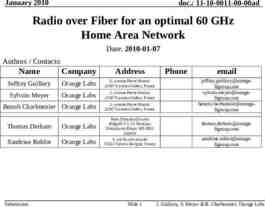Independent Samples ttest Mon, Apr 12th
13 Slides189.00 KB
Independent Samples ttest Mon, Apr 12th
t Test for Independent Means Comparing two samples – e.g., experimental and control group – Scores are independent of each other Focus on differences betw 2 samples, so comparison distribution is: – Distribution of differences between means
Hypotheses Ho: or 1 - 2 0 (no group difference) or 1 2 Ha 1 - 2 not 0 (2 tailed) or 1 - 2 or 0 (if 1-tailed) If null hypothesis is true, the 2 populations (where we get sample means) have equal means Compare T obs to T critical (w/Df N-2) If Tobs T crit Reject Null
Pooled Variance T observed will use concept of pooled variance to estimate standard error: – Assume the 2 populations have the same variance, but sample variance will differ – so pool the sample variances to estimate pop variance – Then standard error used in denom of T obs Note – I’ll show you 2 approaches (you decide which to use based on what data is given to you)
Finding Estimated Standard Error using SS (lab approach) Pooled variance (S2p) S2p (SS1 SS2) / df1 df2 Where, df1 N1-1 and df2 N2-1 and SS1 and SS2 are given to you Then use this to estimate standard error: (S xbar 1 –xbar2) sqrt [(S2p/N1) (S2p/N2)] Estimated Standard Error (using x notation)
Estimated Standard Error using S2y (sample variances – book & HW approach) Skip calculating pooled variance and just estimate standard error: Sybar1 – ybar2 sqrt [((N1-1)S2y1) ((N2-1)S2y2)] (N1 N2) – 2 Estimated Standard Error (using y notation) * Sqrt [(N1 N2)/ N1N2] Note: See p. 480 in book for better representation of this formula!!
T observed Once you’ve estimated standard error, this will be used in T obs: Always 0) T obs (xbar1 – xbar2) – ( 1 - 2) S xbar1 – xbar2 Estimated Standard Error (doesn’t matter if use x or y notation!)
Example – using S2y info Group 1 – watch TV news; Group 2 – radio news; difference in knowledge? Ho: 1 - 2 0; Ha: 1 - 2 not 0 – – – – ybar1 24, S21 4, N1 61 ybar2 26, S22 6, N2 21 Alpha .01, 2-tailed test, df tot N-2 80 S ybar1-ybar2 sqrt[((60)4) ((20)6)] (61 21) - 2 2.12 * sqrt [(61 21) / 61 *21] 2.12 * .253 .536
T obs (24-26) – 0 .536 -3.73 t criticals, alpha .01, df 80, 2 tailed – 2.639 and –2.639 T observed T critical (3.73 2.639) Reject null – there is a difference in knowledge based on news source – (check means to see which is best) radio news was related to higher knowledge. Note: in lab 22 you’ll use other approach (find SS first, then standard error for T denom); this ex. is how HW will look
SPSS example Analyze Compare Means Independent Samples t – Pop up window for “Test Variable” choose the variable whose means you want to compare. For “Grouping Variable” choose the group variable – After clicking into “Grouping Variable”, click on button “Define Groups” to tell SPSS how you’ve labeled the 2 groups
(cont.) – Pop up window, “Use Specified Values” and type in the code for Group 1, then Group 2, hit “continue” · For example, can label these groups anything you’d like when entering data. Are they coded 0 and 1? 1 and 2? etc. Specify it here. – Finally, hit OK – See output example in lab for how to interpret
GSS data example Ho: male - female 0, – Ha: difference not 0 DV # siblings Male xbar 4.00, female xbar 3.98 In output, 1st look at Levene’s test of equality of variances (2 lines) Ho: equal variances: – Equal variances assumed look at sig value – Equal variances not assumed – If ‘sig value” .05 reject Ho of equal variances and look at ‘equal variance not assumed’ line – If ‘sig’ value .05 fail to reject Ho of equal variances and use ‘equal variance assumed’ line
(cont.) Here, fail to reject Ho, use equal variances assumed – Next, using that line, look for ‘sig 2-tailed’ value this is the main hypothesis test of mean differences – If ‘sig’ .05 reject Ho of no group differences – Here, .05, so fail to reject Ho, conclude # sibs doesn’t differ between male/female


















